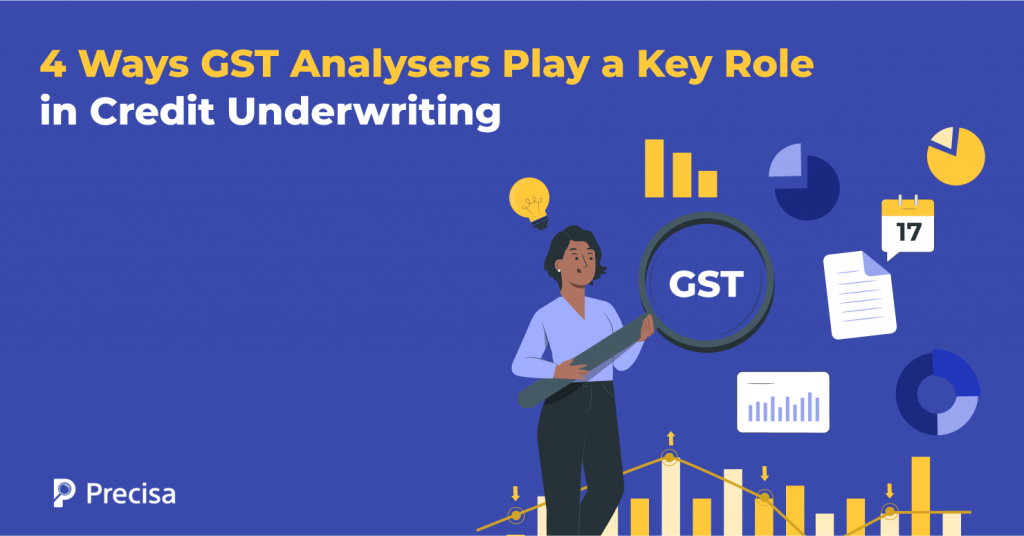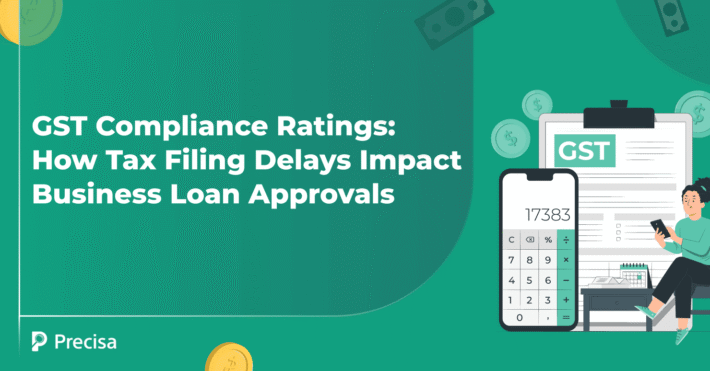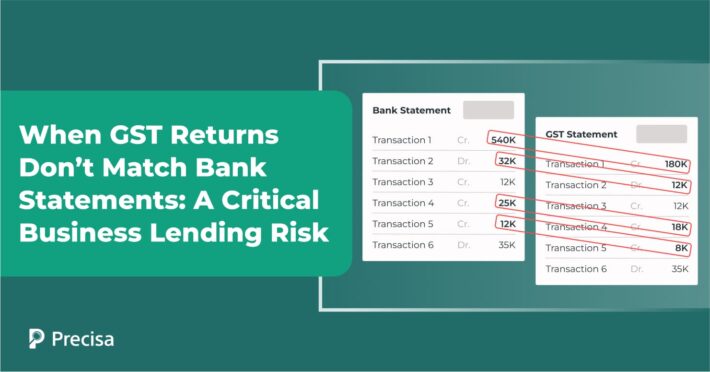4 Ways GST Analysers Play a Key Role in Credit Underwriting

Around 2.74 million Medium and Small Enterprise (MSME) loans were sanctioned in the financial year 2023-2024, a 19.3% volume and 5.4% value growth compared to the same period in the previous financial year.
Additionally, microfinance loans witnessed a 26.8% growth in the defined timelines, indicating a significant rise in the demand for credit in India.
While the demand for credit is set to rise in the upcoming years, lenders need to navigate a major challenge—an increasing percentage of non-performing assets (NPAS).
In 2023, around 16.9% of businesses with sanctioned loans under the Emergency Credit Lines Guarantee Scheme (ECLGS) were declared NPAS, which is an eye-opener for lenders and emphasises the need for tighter scrutiny during credit underwriting.
Since the introduction of the Goods and Services Tax (GST), GST analysis has become a key part of the credit underwriting process, creating a demand for GST analysers to uncover accurate GST-related data and prevent fraud.
This article examines the role of GST analysers in the credit underwriting process and why GST analysis is important for accurate and efficient loan disbursal.
Benefits of Using a GST Analyser During Credit Underwriting

So, what Is a GST Analyser? It is an advanced solution that verifies the GSTIN of all types of businesses, offers insights related to the company’s GST compliance and filing status, and aids lenders in determining the business’s creditworthiness.
Currently, there are around 1.4 crore registered GST entities in India, and the number is set to increase in the upcoming years. While the implementation of GST has improved transparency and introduced uniformity in taxation, lenders must get a clear picture of a business’s GST compliance to detect anomalies and fake GST registrations to reduce defaults.
Here are some of the key benefits of a GST analyser during credit underwriting.
360-degree View of a Business’s Financial Health
One of the most notable benefits of a GST analysis is that it offers a holistic view of a business’s financial health and real-time information about its GST compliance. It is worth noting that businesses must file GST returns each month in a specific format and provide transaction-related details.
- The GSTR-1 list typically includes all the details about the outward supplies, segmented according to customers and bills. This information helps lenders understand a business’s income and spot sudden or unusual transactions.
- Similarly, GSTR-2A/2B offers all the information about inward supplies, including purchase details, giving a clear idea about inventory cycles, production capacities, and more.
- Most importantly, GSTR-3B gives a consolidated statement about all the transactions and taxes paid in a certain month, providing a holistic view of a business’s activities in that period.
Understanding of a Business’s Working Capital
Working capital is the lifeblood of all businesses as it ensures businesses can operate smoothly without any financial constraints. Therefore, working capital management is important for every business as it provides granular insights about inventory cycles, credit terms, and turnover of all receivables.
A GST analyser analyses a business’s GST returns and illuminates invoice-level information that can be used to evaluate working capital patterns. GSTR-1 includes all the key data related to the credit terms offered to each vendor and bill, accurately highlighting the business’s actual operational terms.
Verifies Returns
Tackling forged or false financial statements continues to be a major issue in the credit underwriting space. Several business entities submit financial statements that portray better business health than the actual situation to accelerate loan approvals.
However, these issues have reduced since the advent of the new process, wherein businesses must file GST returns on the GST portal based on statutory tax filings.
Further, these returns are submitted and signed digitally, eliminating the possibility of making any modifications. The inward-outward reconciliation in the portal minimises the chances of reporting fake transactions, ensuring high authenticity of financial information, and accurate credit assessment.
Tax Compliance
Data related to a company’s tax compliance offers a clear understanding of a business’s ethical and governance standards. Inaccurate reporting and late tax filings are key indicators of poor financial and compliance management, highlighting areas that require stringent oversight and timely regulatory intervention.
Today, GST is seamlessly processed electronically, and an in-depth GST analysis reveals a business’s compliance history, frequency of tax filings, and amount of taxes paid; key and useful data for lenders during the underwriting process.
GST-related information helps lenders refine their credit modelling techniques with the latest and relevant financial details of borrowers, allowing them to make informed lending decisions.
Final Thoughts
The adoption of technology across the Indian financial ecosystem is increasing rapidly, thanks to increasing digital literacy, government initiatives, and increasing demand for convenient and transparent solutions and processes.
GST analysers play a key role in ensuring GST compliance, preventing fraud, and making sound credit underwriting decisions. As India’s GST system approaches a decade since its launch in 2017, the arrival of tech-driven tools will play a key role in improving GST compliance and transparency.
Precisa’s GST analyser has helped top lending institutions determine a business’s creditworthiness and make accurate credit underwriting decisions. From analysing GSTR-1, GSTR-2A, and GSTR-3B data to detecting anomalies, Precia’s GST analyser is developed to make accurate lending decisions efficiently.
Contact us to know more!



